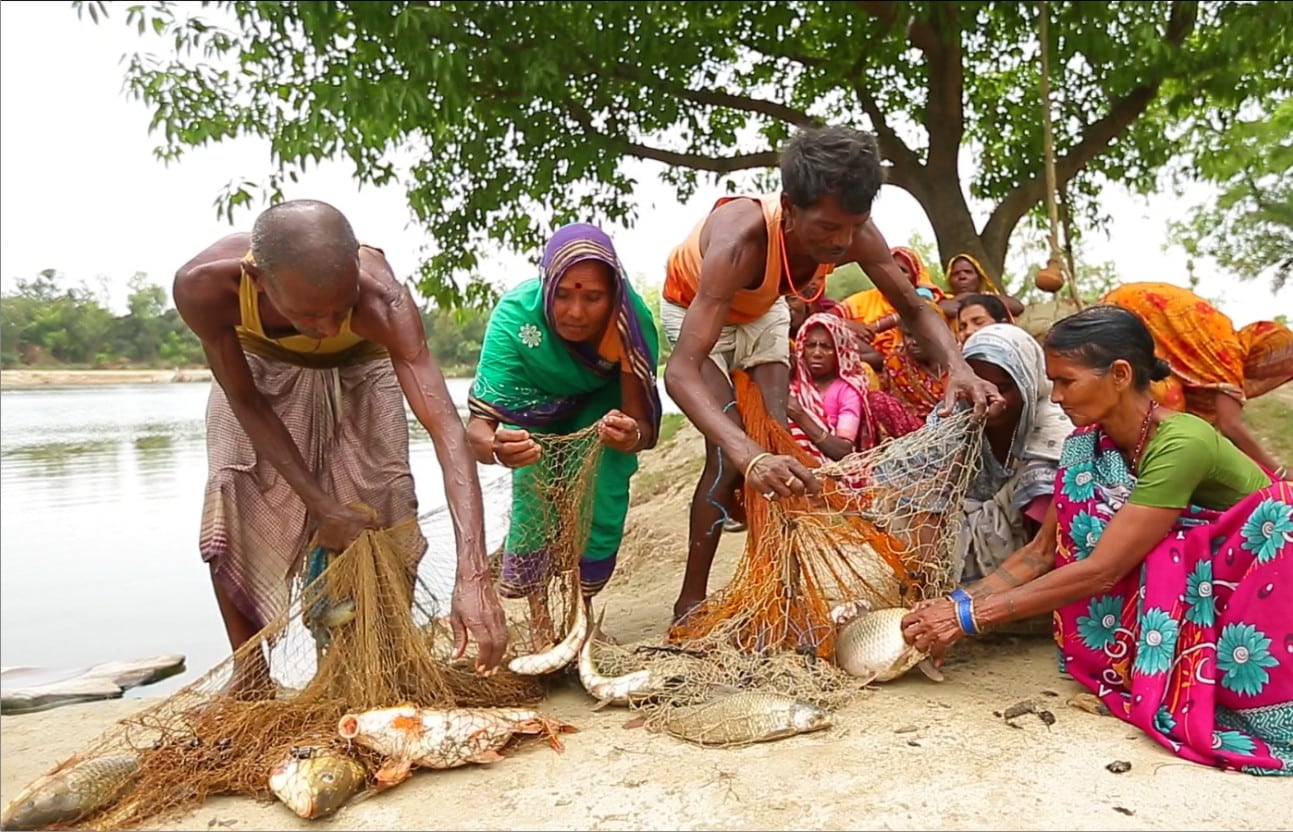The situation of elderly in India today is grim. Let’s understand the reasons why there is an ever increasing need for #SabkoPension in the country, both with respect to, universality of coverage and universality of a bare minimum dignified amount.
The Demographic Change
Though India is currently the nation with the maximum number of young people, however it is silently also undergoing a massive unseen demographic shift which will change this picture of the nation with maximum number of young people by 2050. Apart from most of the current young people growing old by 2050 the other factor that is ‘greying’ India is the large increase in life expectancy [due to better health facilities and food intakes slowly reaching more people] which is not just touch the 60 plus but also helping in more 80 plus living longer. The demographic profile indicates that between 2000-2050, the overall population of India will grow by 55%, however the population of those above 60 years will grow by over 326% and those in the age group of 80 plus will grow by 700%.
The Lack of Financial Security in Old Age
One eighth of the world’s elderly population lives in India. Most will never retire in the usual sense of the word, continuing to work as long as physically possible. Inevitably though, the ability to produce and earn declines with age; and in the absence of savings, so must consumption. Preventing a sharp decline in living standards that for many can mean destitution is the challenge of old age income security in India.
Low Coverage – The Tragedy of Pensions for the Working Poor in India
Less than 14 percent of India’s 450 million workers are currently covered by some pension scheme [including provident funds]. Whereas, roughly 30 million civil servants [at center and states] have inherited a comparatively generous pension scheme and another roughly 20 million employees in listed industries contribute towards a public pension and provident fund which mainly invests in government debt or corporate bonds. Meanwhile, the majority of Indian workers from the unorganized sector, however, do not benefit from a meaningful social security protection system that covers old age sufficiently.
Globalization and Pension Policy Restructuring
A World Bank report titled ‘Averting the old age Crisis: Policies to protect the old age and promote growth’ published in early 1990s argued against universal, public pension policy system and famously proposed a multi-pillar pension policy for governments across the globe. India too was among most of the countries to adopt this policy. It consisted of the following three pillars:-
- Pillar 1 – Non-contributory social pensions.
- Pillar2 – Mandatory employment linked contributory pensions.
- Pillar3 – Optional, contributory pensions.
The design assumes that majority of the population will be covered under either employment linked or option contributory pensions leaving the pillar of public pensions less burdened and more efficient. Nothing was further from the Indian reality. In India this design proved unsustainable because of the large unorganized workforce and the prevalence of mass poverty, a colonial legacy.
Pensions Since 1990s – Steadily deflating Amount for the poor elderly
Following the above policy changes a nation-wide, non-contributory pension floor was introduced for the first time in India in the mid-1990s in the of National Old Age Pension Scheme [NOAPS now IGNOAPS] under National Social Assistance Program [henceforth NSAP]. It was started with an amount of Rs. 75/- per month and no matching contribution from the state government. After that this pension amount was revised by the Central Government in 2007 i.e. from Rs. 75/- p.p. p.m. to Rs. 200/- p.p. p.m for 60 to 79 years and Rs. 500/- p.p. p.m for 80 years plus. Since then till 2016 there has been not much movement in increasing the pension amount or pegging it to rising inflation rather in light it has been deflating. If we keep a deflation rate of 8% per annum [Consumer Price Index average from 2007 to 2016] it reduces the pension amount to Rs. 93/- p.p. p.m. [i.e. lower than when it was first introduced in 1995] in current market prices. Thus there is an urgent need to index – link – this old age pension to inflation otherwise a poor elderly purchasing power becomes very little.
An Urgent Need for Pension Policy Change
In light of the above pathetic situation of the majority of senior citizens in India who are poor there is an urgent need to have a major change in Pension Policy change both at the Centre and States. This can be done by :-
Make Pension Coverage Universal in all states
As on date there are over 10 crores senior citizens [ i.e. 103849000 as per 2011 Census] in India of which approximately 32383877 [ i.e. approx. 31% as per 2011 Census] are covered under Indira Gandhi Old Age Pension [IGNOAPS] which is leaves out a large number of poor elderly working in the unorganized sector till their last day in life. Thus there is an urgent need to universalize i.e. to cover maximum number of the poor and destitute elderly except those who get government or privately created pensions across India in all states.
Increase & Provide an Adequate Pension Amount
Given the current market situation the minimum pension amount for the poor elderly should be at least either half of prevailing minimum wage of the state concerned or at least Rs. 2000/- per month. This is suggested keeping in mind that since poverty in India is defined in terms of a daily calorie-intake norm, namely 2100 calories per person per day in urban India and 2200 calories in rural India, the monthly per capita expenditure at which the calorie intake just met these norms could be taken as the pension amount. NSS data from quinquennial consumer expenditure surveys were used to determine these cut-off levels, and, expressed at prevailing prices, they came, in round numbers as a weighted average between urban and rural areas to Rs. 2000/- per month.
Index-Pension Amount to Inflation
The Pension amount of Rs. 200/- for 60 plus and Rs. 500/- for 80 plus p.p. p.m. contribution by Central Government has not increased since 2007 nor was it ever linked / indexed to inflation without which the actual purchasing power in current market prices will make the amount meaningless.
Increase Budget Outlays for IGNOAPS
The budget outlay i.e. what the government intends to spend and actually spends on social pensions tells a remarkable story of State apathy. Despite the massive increase in elderly population the budget outlay for IGNOAPS the only social pension scheme for the elderly has remained same and is nowhere close to being adequate. It remained between Rs. 5562.7 crores [Actual] to maximum of Rs. 6564.6 crores [Budget Estimate] by the Central Government. This broad outlay of Rs. 6500 crores is equal to a meagre 0.04 percent of GDP – i.e. one of the lowest ratios of outlay to GDP globally.
Constitutional Support for this Pension Policy Change
Constitutional Provisions
Under Article 21 – i.e. Right To Life – i.e. “No person shall be deprived of his life or personal liberty except according to procedure established by law” and article 41 – i.e. “The State shall, within the limits of its economic capacity and development, make effective provision for securing the right to work, to education and to public assistance in case of unemployment, old age, sickness and disablement, and in other cases of undeserved want” the Central and State Governments should address the urgent need of elderly for Universal and Increased & Indexed to Inflation Pension.
Supreme Court Judgement of 13th December 2018
Since the state has not being doing anything on this count. HelpAge India [ as Amicus Curie] and Dr. Ashwani Kumar [ as petitioner] and Pension Parishad [ as Intervenor] recently won a favorable judgement and the Supreme Court issued a ‘continuous mandamus’ in Writ Petition [C] No. 193 of 2016 and a direction to “In particular, the Government of India and State Government must revisit the grant of pension to the elderly so that it is more realistic.” .This means the Central and State Governments should start the process of at least increasing the pension amounts. Due to this case since 2016 many state governments have increased the pension amounts in their states under IGNOAPS i.e. Telengana; Andhra Pradesh; Uttar Pradesh; Madhya Pradesh; Himachal Pradesh; Harayana; Punjab; and Kerala. Two states universalized their pensions i.e. Assam and Bihar.
Need to Continue the Campaign for Pension Policy Change
So the Courts have done some justice and pushed the governments to take action for the senior citizens so there is hope for redressal of the needs of the senior citizens of India. Now the state cannot shed its responsibility towards the elders after this judgement and court direction. The need of the hour is continue this campaign so that more states change their pension policies in favor of the elders.

This article has been written by Mathew Cherian, CEO, HelpAge India .







